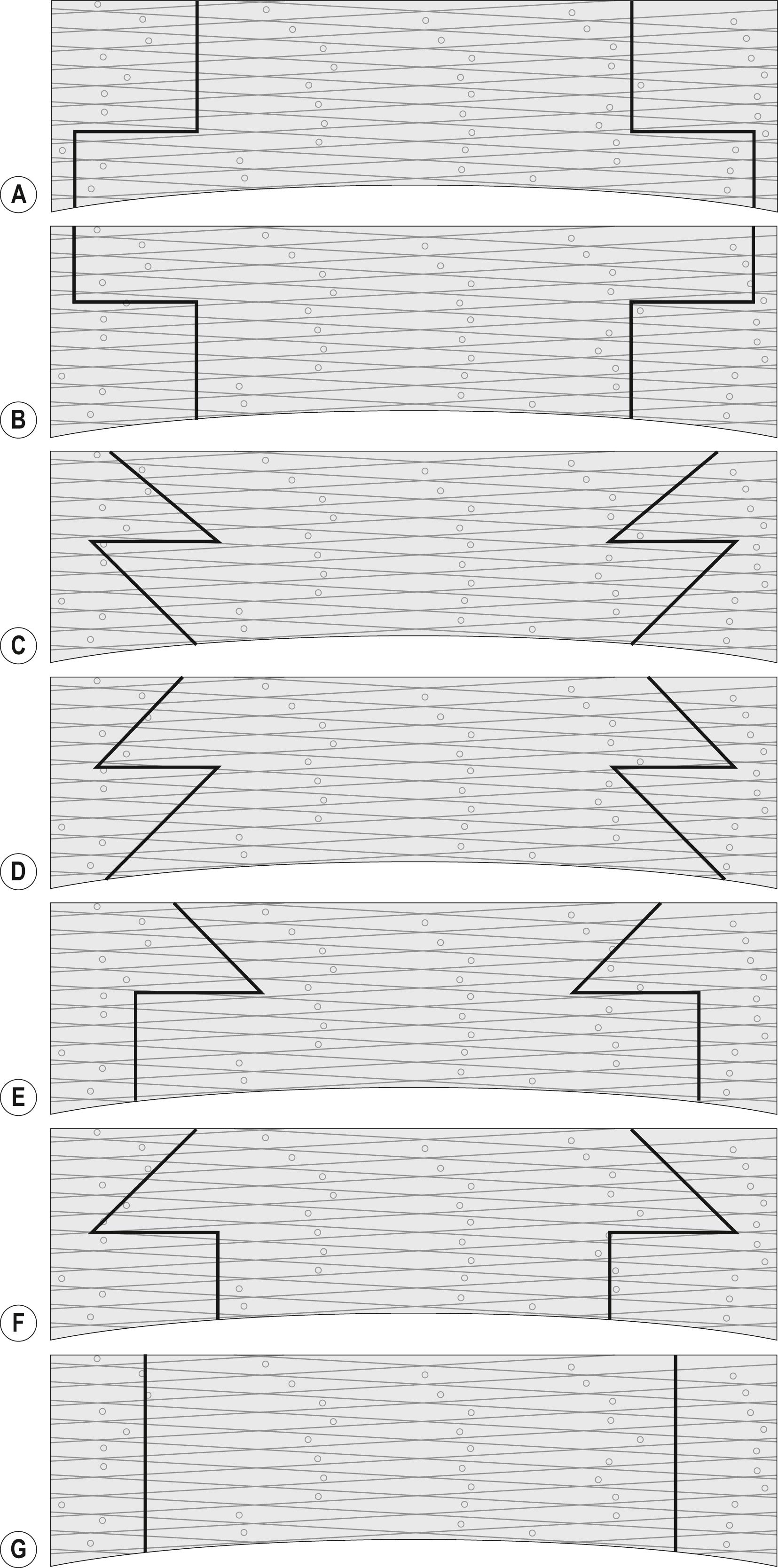Physical Address
304 North Cardinal St.
Dorchester Center, MA 02124
The use of femtosecond lasers in corneal transplant surgery was investigated in 2006, and since then, multiple customized trephination patterns have been conceptualized to improve wound architecture and healing.
Trephination profiles, including the “top-hat,” “mushroom,” and “zig-zag,” among others, can be programmed to match the donor and host to allow precise vertical alignment of tissue. These customized trephinations provide greater surface area for rapid healing.
Radial alignment marks can be programmed to allow for more precise rotational alignment of tissue as well as suture placement.
Studies suggest that femtosecond laser-enabled keratoplasty (FLEK) allows for a more rapid recovery of best vision, potentially has lower and more regular astigmatism, and provides the ability to remove sutures earlier as compared to conventional blade trephination keratoplasty.
The femtosecond laser can be used in the deep anterior lamellar keratoplasty (DALK) technique for patients with anterior stromal pathologies. Femto-DALK decreases the risk of endothelial rejection, maintains the benefits of the customized wound trephination pattern, and provides a uniform starting point for the big-bubble technique.
The creation of deep stromal cuts with femtosecond laser is still under investigation. Newer laser platforms with the ability to adjust settings to produce smooth deep cuts for DALK (without the need for a big bubble) and preparation of tissue for endothelial keratoplasty (EK) are future directions of innovation in femtosecond laser-enabled keratoplasty.
Femtosecond laser technology has allowed great advances in the field of corneal transplantation surgery. This ultrafast laser creates tissue photodisruption by placing micro cavitation bubbles at precise depths within the cornea. These microbubbles then expand and coalesce to form planar tissue cuts. The initial applications of this technology were used for the creation of corneal flaps in laser in situ keratomileusis (LASIK). Further progress in software and hardware technology enabled the laser pulses to be rotated in a circular pattern and advance from one depth to another, thus allowing full-thickness corneal cuts in a variety of nonplanar patterns to be made.
Early in vitro investigations demonstrated that penetrating keratoplasty incisions created by the femtosecond laser in a “top-hat” shape led to increased biomechanical wound stability with up to a sevenfold increase in resistance to leakage and possibly less astigmatism than traditional trephination penetrating keratoplasty (PK) wounds. , In subsequent laboratory and in vivo use of the femtosecond laser for PK incisions, a variety of other biomechanically stable wound configurations were identified. These include the “top-hat,” “mushroom,” “zig-zag,” “Christmas tree,” “zig-square,” and “anvil” shapes ( Fig. 113.1A–F ). From a biomechanical strength standpoint, all of these wound configurations create more surface area for healing and are more stable than the traditional “butt” joint (see Fig. 113.1G ) created with standard corneal trephination PK.

There are many sources of optical distortion that decrease visual outcomes and increase healing time after conventional blade trephination PK including the following: misalignment of the anterior surfaces of the donor and host, rotational misalignment (tissue not precisely distributed along the circumference of the graft), uneven suture placement, and uneven suture tension. The goal of femtosecond laser use during PK is to address each of these problem areas and to specifically provide: (1) physical step-offs to allow for easier anterior and posterior alignment of the tissue, (2) circumferential hash marks to improve rotational alignment of the tissue, (3) increased surface area for potential earlier and overall stronger wound healing, and (4) shaped wounds with less need for excess suture tightness.
Become a Clinical Tree membership for Full access and enjoy Unlimited articles
If you are a member. Log in here